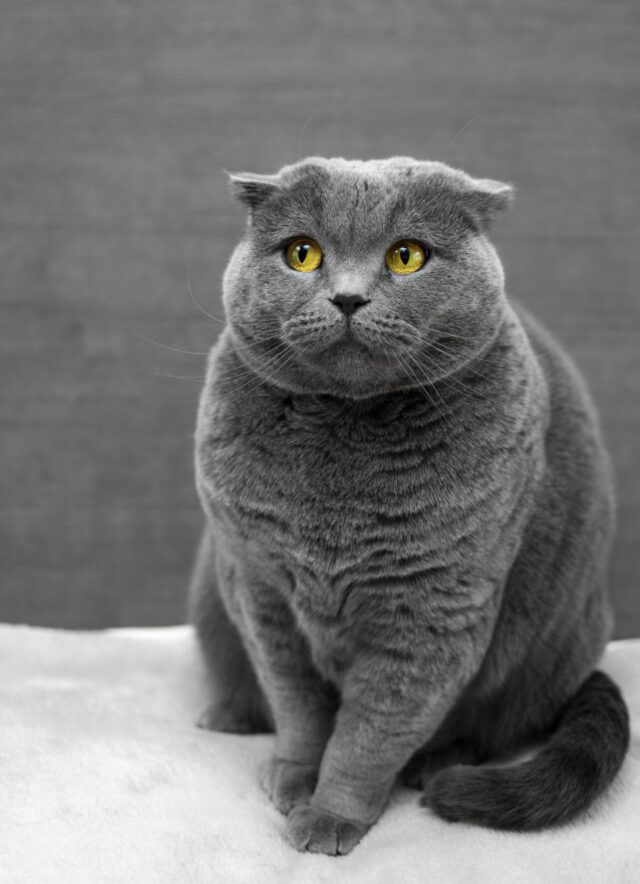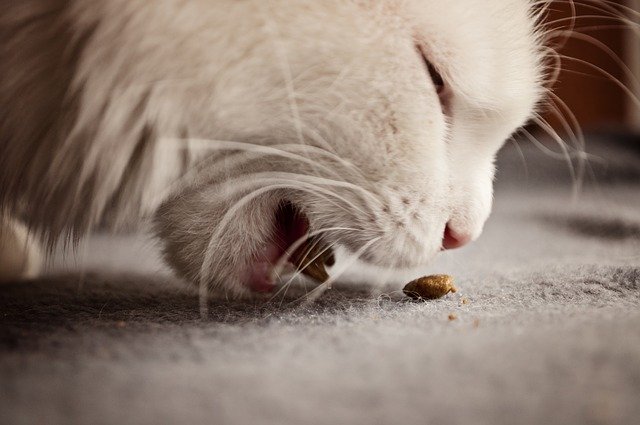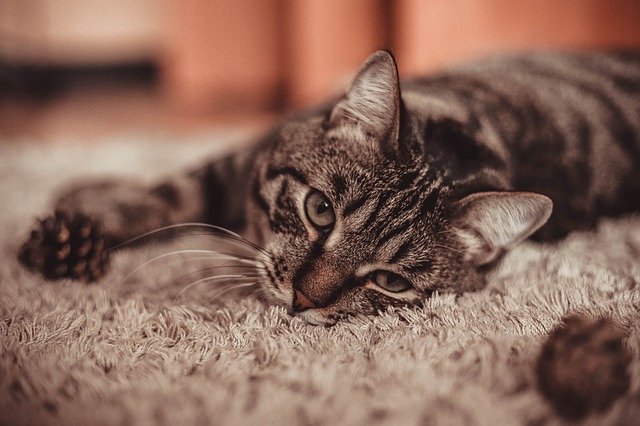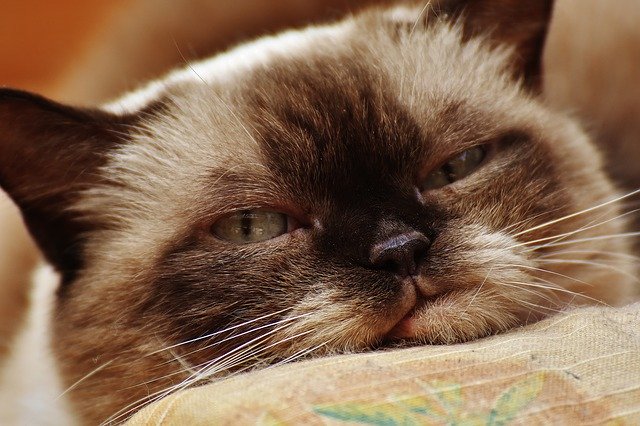Do you know the signs of diabetes in cats?
The symptoms of diabetes mellitus begin quietly, but quickly ramp up. Without intervention, diabetes will grow into a serious problem. Diabetes in cats has grown fairly common, and, unfortunately, the prevalence of feline high-carbohydrate diets has the number of afflicted cats on the rise. In fact, 1 in 230 cats develops diabetes and this figure is expected to climb upwards as much as 18% over a 10-year period, according to VetSource.com.
Dr. JoAnna Pendergrass reports a cat faces a higher risk of developing diabetes if the cat is:
- Obese
- Inactive
- A neutered male
- Vaccinated
- 7+ years in age
- An overeater of a dry food diet
- Taking certain medications, i.e. corticosteroids
These risk factors aside, any cat can be susceptible, so just because your kitty is a lady and only 6 years old, doesn’t guarantee she will remain free of diabetes. By remaining aware of risk factors and your cat’s behavior, you can help your cat live healthy and happy for years to come. And that’s a win for kitties and cat parents.
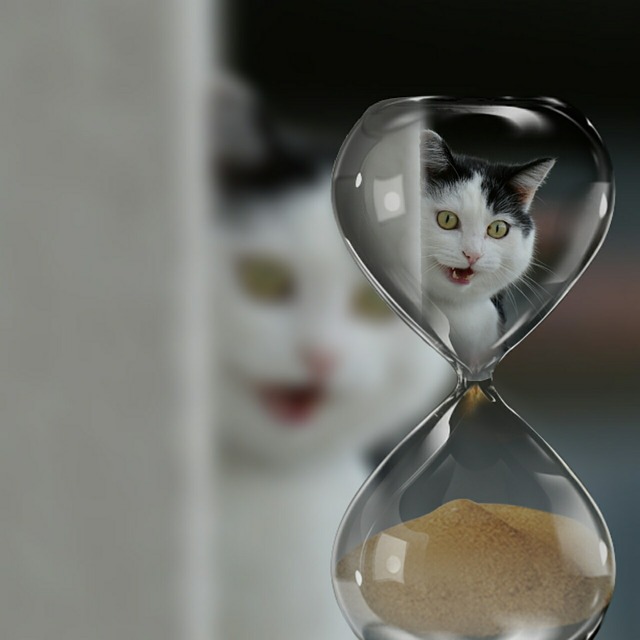
Don’t wait if you notice signs of diabetes in cats. Call the vet.
Check out these 9 signs of diabetes in cats and stay on top of any would-be issues.
1. Constant Trips to the Litter Pan
Increased urination is generally one of the first signs of diabetes in cats that parents notice. Scooping the litter pan gives a pretty good idea of how much a cat is going potty.
When cats suffer from diabetes, either Type I or Type II, the body is overfilled with sugar because either the body doesn’t produce enough insulin to breakdown blood glucose or cells don’t respond to insulin production. Couple this with a high carbohydrate diet, and, as Christie Long, DVM, explains, “The problem is that the cat’s body is so bombarded with carbohydrates due to overeating that the insulin receptors on the cells no longer respond to insulin.”
With all this extra sugar circulating in the blood, “the relatively heavy nature of glucose-laden urine pulls more water out of the blood, causing excessive water loss,” which can cause dehydration or excessive urination.
Related: 8 Best Self Cleaning Litter Boxes for Cats
2. Sugar Cats Drink So Much Water
If your cat is always haunting the water bowl, maybe even sitting beside it as a new choice of hangout, your cat may be struggling with dehydration. An increased need for water is another of the more prevalent symptoms of diabetes in cats and happens thanks to glucose-drenched kidneys trying to flush the extra sugar from the body. The sugary urine produced by the overworked kidneys is heavy and drains more water from the blood, leaving a cat with an insatiable thirst.
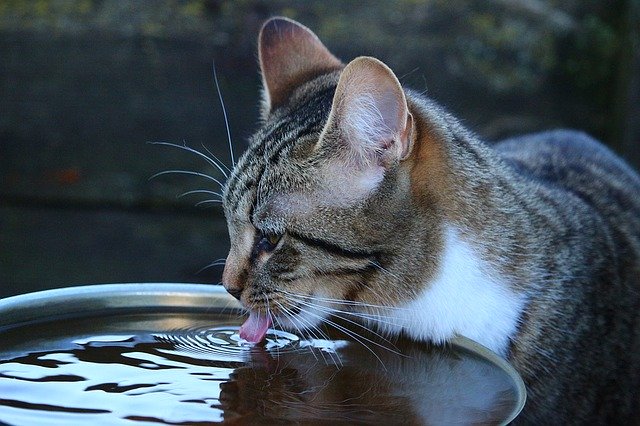
Diabetic cats can never quench their thirst.
Your cat’s water intake can be easily monitored by checking the water bowl at the beginning and end of the day. In the morning, measure out and pour a chosen amount into the dish. The next morning, pour the remaining water in the cat’s dish into a measuring cup and subtract from the day before’s beginning level. This gives you an idea of much water he consumed in a 24-hour period.
To understand whether or not your cat is drinking more than an average amount here’s some figures from PreventiveVet.com to help you gauge.
“Typically, cats need between 3.5–4.5 ounces of water per 5 pounds of body weight per day. If you have a 10-pound cat, they should be consuming between 7–9 ounces of water, or about half an average bottle of water.”
Canned or wet cat food can also supply around 4 oz of water, so add this to your tally. If you notice you kitty dear furiously lapping water at all hours, it might be time to schedule an appointment with the vet.
3. Bottomless Pit of Hunger
Diabetic cats typically have ravenous appetites. Their bodies just can’t use the food fuel it’s given when insulin levels are awry and blood sugar is high.
PetMD explains, “Because insulin helps the body to use sugar for energy, lack of insulin also means that the body’s organs will not receive enough energy. This will make your cat feel hungry all the time, and though it will eat a lot more food, it will not gain weight.
4. The Hungry Cat is a Scrawny Cat
If your kitty stuffs his belly at every turn and he’s still losing weight, you could be witnessing one of the signs of diabetes in cats. This combo of overeating and not gaining weight comes back to the body’s cells not being able to function at their normal levels.
Though there is an excess of sugar in the body, cells are not converting glucose to energy. “To get the energy it needs, the body turns to other sources, breaking down fats and proteins to feed glucose-starved cells. This breakdown results in weight loss, despite increased appetite,” as Cornell University College of Veterinary Medicine explains.
With glucose eating up fat cells, chubby cats thin out to slinky cats. Any dramatic weight loss in cats should be reported to the vet. Make an appointment if your chonky one is suddenly skinny as a rail.
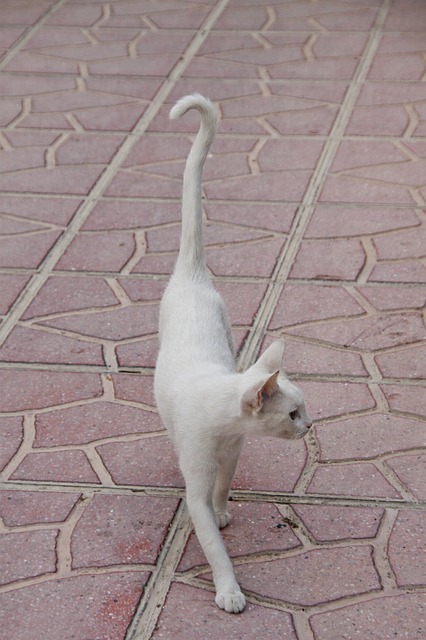
Some cats are naturally thin, but sudden weight loss is not good.
5. Not Appearing Up to Usual Royal Cat Standards
The effects of diabetes can tell the story both inside and outside a cat’s body. As diabetes causes dehydration, afflicted cats often have a disheveled appearance. Fur and skin dry out, leading to a dull coat and flaky skin.
And, if your kitty dear isn’t feeling well as a result of diabetes, he may not feel up to his usual grooming standards.
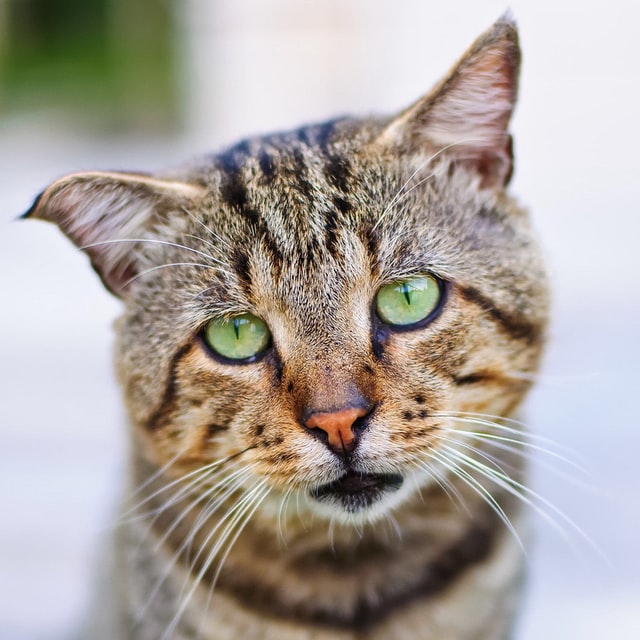
One sign of diabetes in cats is an overall dull appearance.
Have a look at your cat. Does he look well? Or does he look like he feels rough? You know your kitty love better than anyone else, so listen to your cat mom instincts. If they’re telling you your handsome man isn’t well, then head to the vet.
6. Tip-Toe Gait of Leg Neuropathy
One of the more distressing signs of diabetes in cats is problems with their gait and stance.
A buildup of sugar in the blood can lead to chronic nerve degeneration in a cat’s hind legs. This feline diabetic neuropathy brings muscle loss and weakness to the back legs, which causes pain when the cat simply walks on the affected rear paws.
The veterinarians of VetInfo.com point out cats with feline diabetic neuropathy often “walk on the tips of their toes.”
Or, they develop a “‘plantegrade’ stance of the hind limbs”, which leaves them standing flat on their hocks.
If you notice your cat walking in this strange way, call the vet for an appointment. Also, look for any of these other 9 signs of diabetes in cats. Be sure to report all symptoms to the doctor.
7. Making Messes Outside the Litter Pan
If your cat has been urinating more and sometimes outside the litter box, this could be a sign of diabetes in cats.
As cats with diabetes urinate more frequently, they take more trips to the litter pan and this excess urination can cause a cat to make mistakes outside the pan for a few reasons.
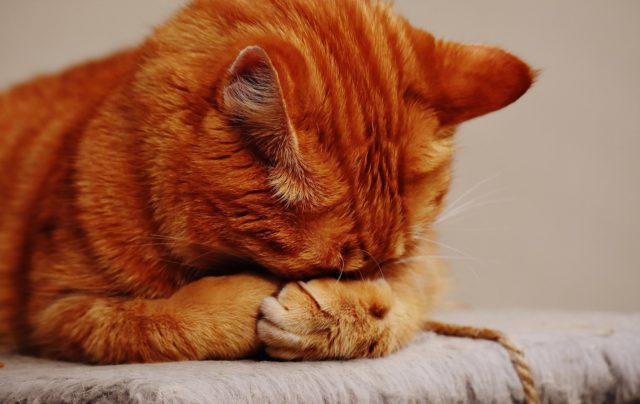
Sometimes kitties can’t help making a mess.
Your cat might be having accidents outside his litter box because he can’t hold all the excess urine caused by diabetes and just goes where he makes it to.
His sudden aversion to the box might be from his repeated trips to the litter. Cats are notoriously persnickety about their litter pans. Picky paws don’t care to dig in soiled litter. If indeed your cat is peeing more frequently, then the box is getting dirtier faster, which can lead to outside the box accidents.
Stress can also cause a cat to urinate outside their litter pans. The constant urination could be stressing kitty dear as the constant sensation of a full bladder isn’t something he’s accustomed to. Or, the general sense of feeling unwell that can arise with diabetes might be causing him to feel discomfort, which he expresses by urinating outside the litter pan.
Whatever is causing your cat to urinate outside the litter pan, the behavior is one warranting a trip to the vet.
8. Laziness Sinks into Lethargy
Cats can be lazy, this fact is well known, but lethargy is a different matter.
With the body’s cells not getting enough insulin or unable to process insulin because of diabetes, they lack the energy to perform their vital functions. And when a cat’s body can’t function at its peak, extreme tiredness sets in.
If your cat has lost all energy and can’t be roused from an unusual stretch of extreme laziness, make an appointment with the vet. Serious lethargy can be a sign of advanced diabetes.
9. Sugar Sweet Cat Breath
Cat breath is a strange thing. Some cat parents love the smell of their kitty’s wild breath while others wish for a sweeter smell from their cat’s mouth. But, believe it or not, sweet breath from a cat’s mouth is a sign of diabetes in cats.
“Since a cat with diabetes cannot convert fatty acids from fat tissue to triglycerides for energy, the fatty acids are converted to unusable ketones instead. These ketones cause the sweet-smelling breath often noticed in cats in diabetic ketoacidosis,” according to The Spruce Pets.

Sweet cat breath is not a dream come true.
If your cat’s breath has a “distinct fruity or sweet smell”, make an appointment with the veterinarian. This sweet breath is an indicator of building ketones in the blood.
Medical News Today reports breath that smells sweet or like acetone “suggests that there are high levels of ketones in their blood. As the ketones build up, they increase the acidity of the blood. This can be toxic.” This stands true for humans and cats.
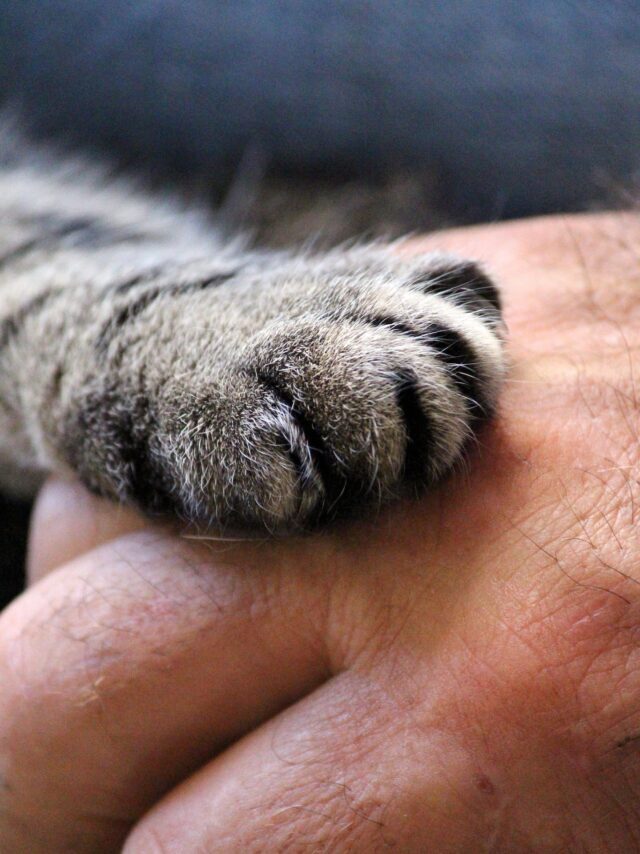 You can get through this together!
You can get through this together!
Don’t fear if your cat is diagnosed with diabetes. With proper treatments and an adjusted diet, your cat can live a full and active life. Some cats, when diabetes is discovered early, even experience diabetic remission. Keep an eye out for any of these 9 signs of diabetes in cats and catch any problems early.

